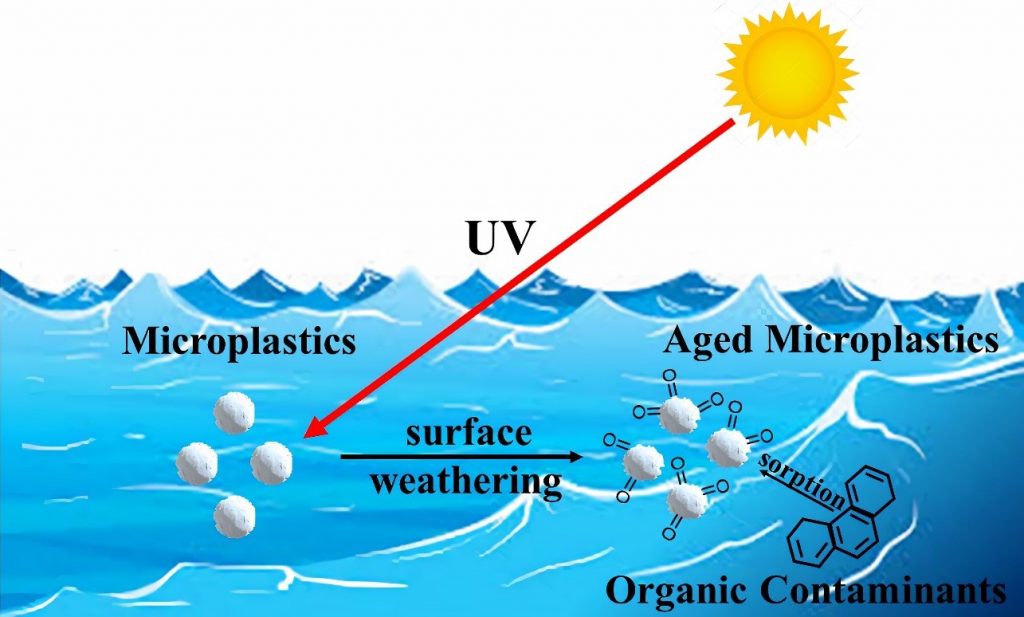
When released into the environment, plastics undergo surface weathering due to mechanical abrasion and ultraviolet (UV) exposure that leads to the formation of microplastics. These microplastics, when present as a mixture with other co-existing organic and metallic contaminants, may interact with each other through adsorption mechanisms thus exhibiting an augmented level of toxicity. Such interactions may be altered due to UV aging and biological (biofouling) surface weathering of these microplastics raising a question as to how contaminant-microplastics interactions will evolve as microplastics are altered by biotic and abiotic factors in the environment? Our research focuses on understanding the potential role of microplastics as vectors of contaminants in the environment as well as understanding the complex interplay between surface weathering of microplastics and contaminant adsorption to assess the environmental risks posed by microplastic pollution.
Selected Publications
Bhagat, K., Barrios, A.C., Rajwade, K., Kumar, A., Oswald, J., Apul, O.G., Perreault, F. 2022. Aging of Microplastics Increases Their Adsorption Affinity Towards Organic Contaminants. Chemosphere 298, 134238.
Costigan, E., Collins, A., Hatinoglu, M.D., Bhagat, K., Macrae, J., Perreault, F., Apul, O.G. 2022. Adsorption of Organic Pollutants by Microplastics: Overview of A Dissonant Literature. Journal of Hazardous Materials Advances 6, 100091.
Funding sources
National Science Foundation (ECS-2003859)
National Science Foundation (ECS-2004160)

